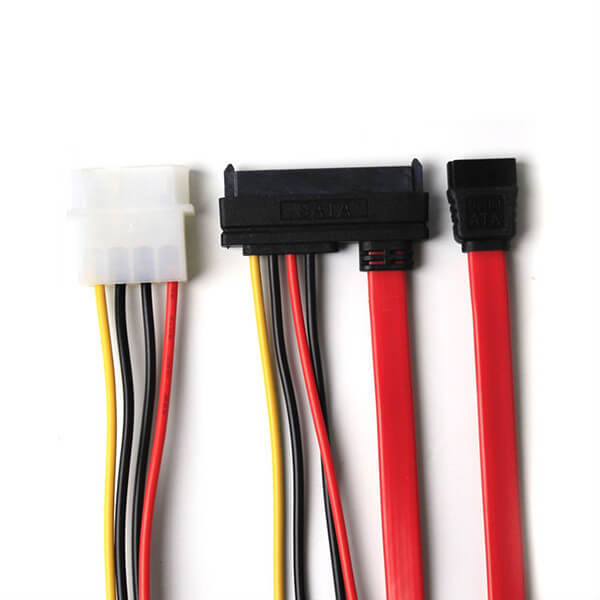what is the HDD connection cable?
An HDD connection cable is used to interface a hard disk drive (HDD) with a computer or other host device. The exact type of cable you use depends on the interface of the HDD. Here are the main types of HDD connection cables based on common HDD interfaces:
1. SATA Cable
Description: The most common interface for modern HDDs is SATA (Serial ATA).
Data Cable: A SATA data cable has a 7-pin connector and is used to transfer data between the HDD and the motherboard.
Power Cable: A SATA power cable has a 15-pin connector and supplies power to the HDD.
SATA 22-pin Cable: Some external HDD enclosures and compact devices use a combined SATA 22-pin connector that integrates both data and power in a single interface.
Typical Use: Internal connections in desktops and laptops, as well as in external enclosures and docking stations.
2. IDE Cable (PATA)
Description: Older HDDs use the IDE (Integrated Drive Electronics) or PATA (Parallel ATA) interface.
40-pin Ribbon Cable: This cable connects the HDD to the motherboard. It has a 40-pin connector and is often accompanied by a 4-pin Molex power connector.
4-pin Molex Power Cable: Provides power to the IDE HDD.
Typical Use: Older desktops and some legacy systems.
3. SCSI Cable
Description: For high-performance or specialized HDDs, SCSI (Small Computer System Interface) cables are used.
50-pin, 68-pin, or 80-pin Connector: The type of connector varies depending on the SCSI standard (e.g., SCSI-1, SCSI-2, or Ultra320 SCSI).
Power Cable: Depending on the SCSI interface and drive type, the power connector can vary.
Typical Use: Enterprise storage solutions, older high-performance systems.
4. M.2 Cable
Description: For newer SSDs that use the M.2 interface, a direct connection to the motherboard is common, but adapters are available for different types of M.2 SSDs.
M.2 Interface: Not typically used with a traditional cable but rather with a direct slot on the motherboard. For M.2 SATA SSDs, no additional cables are needed; for M.2 NVMe SSDs, a direct motherboard connection is used.
Typical Use: Modern desktops and laptops with M.2 slots.
5. USB Cable
Description: External HDDs commonly use USB (Universal Serial Bus) for connectivity.
USB 3.0/3.1/3.2 Cable: Provides data transfer and power in one cable.
USB-C: A newer type of USB connector used for both data transfer and power, increasingly common in modern external drives.
Typical Use: External HDDs and SSDs for use with various devices including desktops, laptops, and some tablets.
Summary
The type of HDD connection cable you use depends on the HDD’s interface. SATA is the most common for modern internal drives, IDE/PATA for older drives, SCSI for specialized and enterprise storage, and USB for external drives. Each interface has specific cables designed to ensure proper data transfer and power delivery to the HDD.
Send your message to us:
Post time: Jul-16-2024
